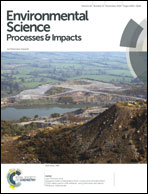Assessing metal contamination from construction and demolition (C&D) waste used to infill wetlands: using Deroceras reticulatum (Mollusca: Gastropoda)
Abstract
Large quantities of construction and demolition waste (C&D) are produced globally every year, with little known about potential environmental impacts. In the present study, the slug, Deroceras reticulatum (Mollusca: Gastropoda) was used as the first biomonitor of metals (Ag, As, Ba, Cd, Co, Cr, Cu, Mn, Mo, Ni, Pb, Sb, Se, Ti, Tl, V and Zn) on wetlands post infilling with construction and demolition (C&D) waste. The bioaccumulation of As, Ba, Cd, Co, Sb, Se and Tl were found to be significantly elevated in slugs collected on C&D waste when compared to unimproved pastures (control sites), while Mo, Se and Sr had significantly higher concentrations in slugs collected on C&D waste when compared to known contaminated sites (mining locations), indicating the potential hazardous nature of C&D waste to biota. Identifying exact sources for these metals within the waste can be problematic, due to its heterogenic nature. Biomonitors are a useful tool for future monitoring and impact studies, facilitating policy makers and regulations in other countries regarding C&D waste infill. In addition, improving separation of C&D waste to allow increased reuse and recycling is likely to be effective in reducing the volume of waste being used as infill, subsequently decreasing potential metal contamination.


 Please wait while we load your content...
Please wait while we load your content...